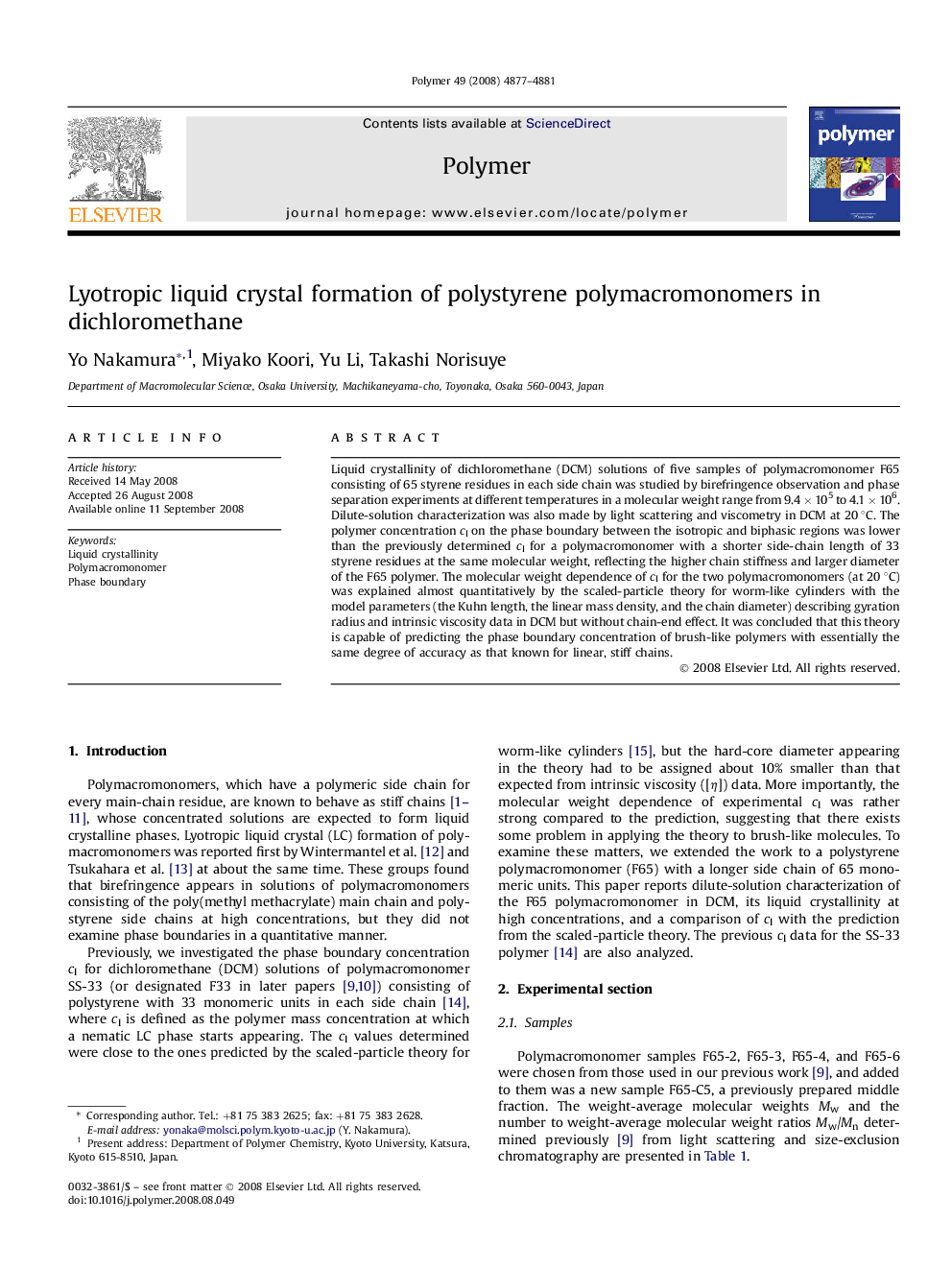| Article ID | Journal | Published Year | Pages | File Type |
|---|---|---|---|---|
| 5188590 | Polymer | 2008 | 5 Pages |
Liquid crystallinity of dichloromethane (DCM) solutions of five samples of polymacromonomer F65 consisting of 65 styrene residues in each side chain was studied by birefringence observation and phase separation experiments at different temperatures in a molecular weight range from 9.4 Ã 105 to 4.1 Ã 106. Dilute-solution characterization was also made by light scattering and viscometry in DCM at 20 °C. The polymer concentration cI on the phase boundary between the isotropic and biphasic regions was lower than the previously determined cI for a polymacromonomer with a shorter side-chain length of 33 styrene residues at the same molecular weight, reflecting the higher chain stiffness and larger diameter of the F65 polymer. The molecular weight dependence of cI for the two polymacromonomers (at 20 °C) was explained almost quantitatively by the scaled-particle theory for worm-like cylinders with the model parameters (the Kuhn length, the linear mass density, and the chain diameter) describing gyration radius and intrinsic viscosity data in DCM but without chain-end effect. It was concluded that this theory is capable of predicting the phase boundary concentration of brush-like polymers with essentially the same degree of accuracy as that known for linear, stiff chains.
Graphical abstractDownload full-size image
